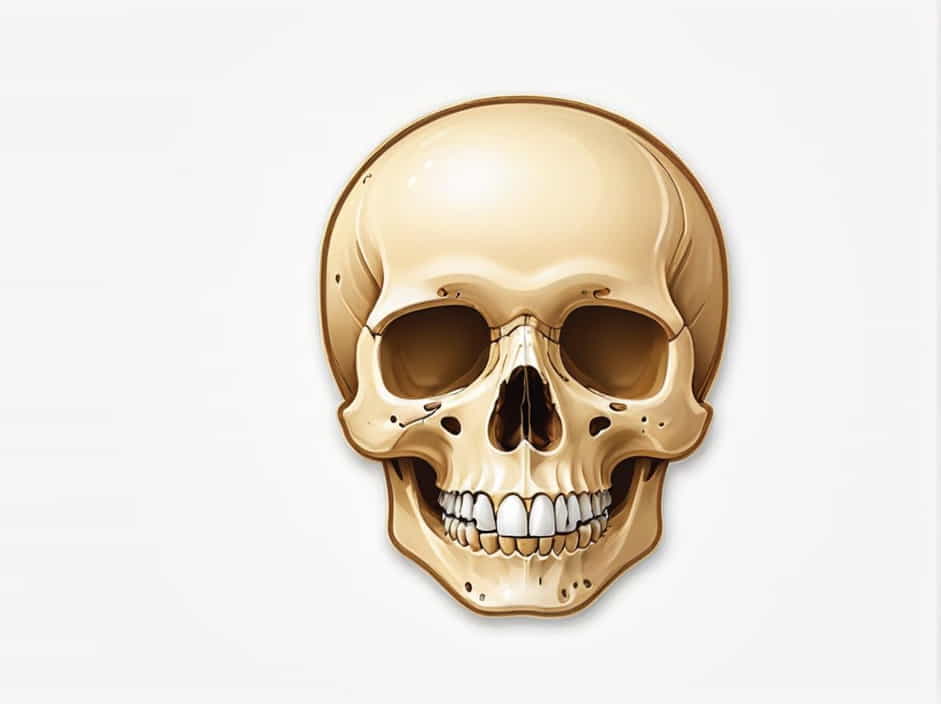The hindmost bone of the skull is the occipital bone, a vital structure that plays a crucial role in protecting the brain and supporting the head. Located at the back and base of the skull, the occipital bone connects to the spine and houses the foramen magnum, an opening that allows the spinal cord to pass through.
Understanding the occipital bone’s anatomy, functions, and importance can help us appreciate how it contributes to posture, movement, and neurological health.
Anatomy of the Occipital Bone
The occipital bone is a flat, curved bone that forms the posterior (back) part of the skull. It has several key features that contribute to its function:
1. Foramen Magnum
- The large central opening in the occipital bone.
- Allows the spinal cord to connect to the brainstem.
- Essential for neural communication and motor control.
2. Occipital Condyles
- Two rounded structures on either side of the foramen magnum.
- Articulate with the atlas (C1 vertebra) to form the atlanto-occipital joint.
- Enable nodding and slight head movements.
3. External Occipital Protuberance
- A bony bump located at the lower back of the skull.
- Serves as an attachment site for muscles and ligaments that support the head and neck.
4. Superior and Inferior Nuchal Lines
- Curved ridges on the occipital bone.
- Provide attachment for neck muscles, aiding in head movement and posture.
Functions of the Occipital Bone
1. Protects the Brain
The occipital bone forms the back part of the cranial cavity, protecting the occipital lobe of the brain. This area of the brain is responsible for visual processing, making the occipital bone crucial for vision and perception.
2. Supports Head Movement
The occipital condyles connect with the first cervical vertebra (atlas), allowing for flexibility in head movement. This joint enables:
- Nodding (“yes” motion) – Forward and backward movement.
- Tilting – Slight side-to-side motion.
3. Facilitates Spinal Cord Connection
The foramen magnum provides a passageway for the spinal cord, linking the brain to the rest of the body. This connection is essential for:
- Sending motor signals from the brain to the limbs.
- Receiving sensory input from the body.
- Coordinating reflexes and movement.
4. Provides Muscle Attachment for Stability
Several important neck muscles attach to the occipital bone, contributing to posture, balance, and head movement. These muscles include:
- Trapezius muscle – Helps move and stabilize the shoulders and neck.
- Sternocleidomastoid muscle – Assists in head rotation and flexion.
- Splenius capitis muscle – Supports head extension and lateral movement.
Common Injuries and Disorders of the Occipital Bone
Despite its strength, the occipital bone can be affected by injuries and medical conditions. Some common issues include:
1. Occipital Fractures
- Often caused by trauma, falls, or car accidents.
- Can result in severe pain, swelling, and neurological complications.
- May require CT scans or MRIs for diagnosis.
2. Occipital Neuralgia
- A condition where the occipital nerves become irritated or compressed.
- Causes sharp, shooting pain at the back of the head.
- Can be triggered by poor posture, stress, or injuries.
- Treatment includes physical therapy, medications, or nerve blocks.
3. Basilar Invagination
- A condition where the occipital bone pushes into the spinal canal.
- Can lead to compression of the brainstem, causing dizziness, headaches, and weakness.
- Often associated with genetic disorders like Chiari malformation.
How to Maintain a Healthy Occipital Bone
1. Practice Good Posture
- Keep your head aligned with your spine to reduce strain.
- Avoid hunching over screens for long periods.
- Use ergonomic chairs and pillows to support neck alignment.
2. Strengthen Neck Muscles
Engaging in exercises that support the occipital bone can help prevent strain and injury:
- Neck stretches – Improve flexibility and reduce tension.
- Isometric neck exercises – Strengthen the muscles that support head movement.
- Postural training – Helps maintain proper head and spine alignment.
3. Protect Against Head Injuries
- Wear a helmet when biking, playing contact sports, or engaging in risky activities.
- Use seatbelts to reduce the risk of head trauma in car accidents.
- Be mindful of slippery surfaces to prevent falls.
4. Manage Stress and Muscle Tension
- Massage therapy can relieve tension in the occipital region.
- Heat or cold therapy can soothe sore muscles.
- Relaxation techniques, such as yoga or deep breathing, can prevent neck strain.
The occipital bone is the hindmost bone of the skull, playing a vital role in protecting the brain, supporting head movement, and facilitating spinal cord function. Its anatomy and structural features make it essential for posture, vision, and balance.
Maintaining good posture, strengthening neck muscles, and preventing head injuries are crucial for keeping the occipital bone healthy. By understanding its functions and importance, we can appreciate how this key skull bone supports our daily activities and overall well-being.
